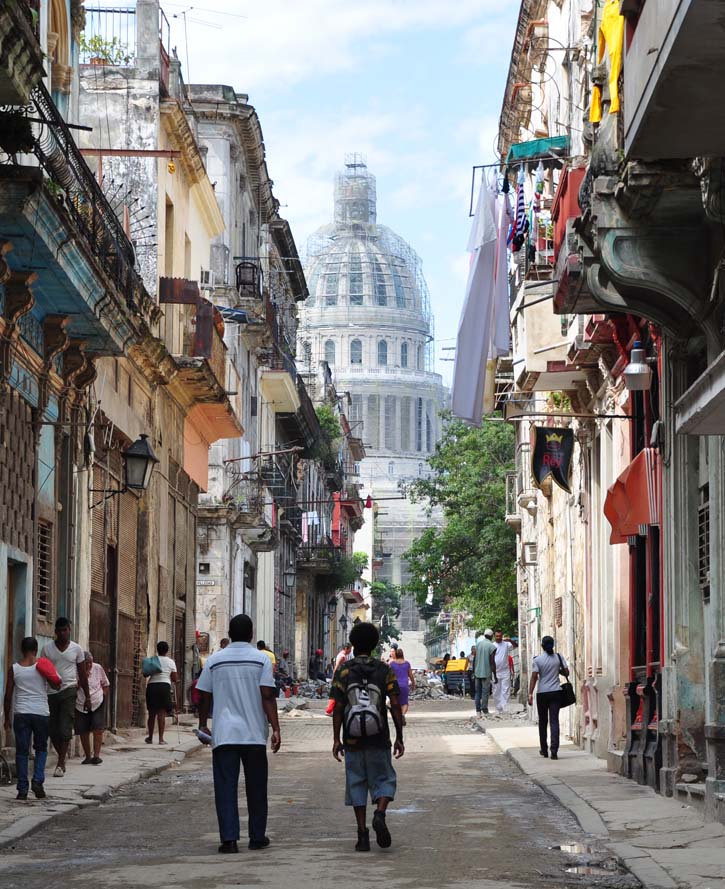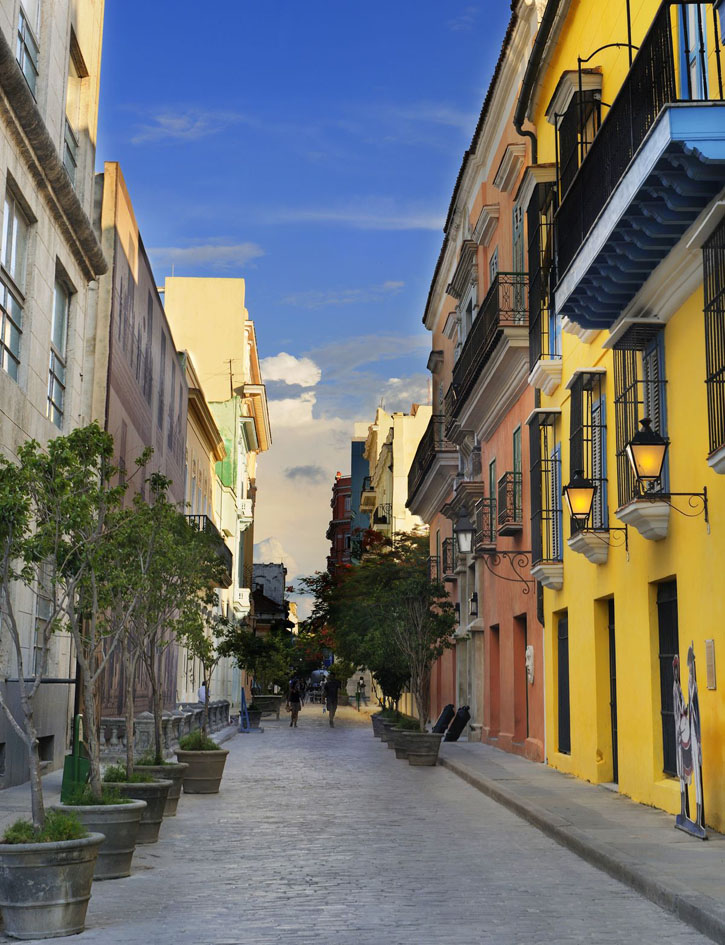Old Havana has been called the “finest urban ensemble in the Americas.” The fortress colonial town that burst its walls when Washington, D.C., was still a swamp is a 140-hectare repository of antique buildings. More than 900 of Habana Vieja’s 3,157 structures are of historical importance. Of these, only 101 were built in the 20th century. Almost 500 are from the 19th; 200 are from the 18th; and 144 are from the 16th and 17th. Alas, many buildings are crumbling into ruins around the people who occupy them.

A street in Habana Vieja, Havana, Cuba, leads to El Capitolio building, which is undergoing a facelift. Photo © halbag, licensed Creative Commons Attribution.
The most important buildings have received major renovations; others have been given facelifts.In 1977, the Cuban government named Habana Vieja a National Monument. In 1982, UNESCO named Habana Vieja a World Heritage Site worthy of international protection. Cuba formalized a plan to rescue much of the old city from decades of neglect under the guidance of Eusebio Leal Spengler, the official city historian, who runs the Oficina del Historiador de la Ciudad de La Habana (Av. del Puerto, esq. Obrapí, Habana Vieja, tel. 07/861-5001). Leal, who grew up in Habana Vieja, is a member of Cuba’s National Assembly, the Central Committee of the Communist Party, and the all-important Council of State.The ambitious plan stretches into the future and has concentrated on four squares: Plaza de Armas, Plaza de la Catedral, Plaza Vieja, and Plaza de San Francisco. The most important buildings have received major renovations; others have been given facelifts. Priority is given to edifices with income-generating tourist value. Structures are ranked into one of four levels according to historical and physical value. The top level is reserved for museums; the second level is for hotels, restaurants, offices, and schools; and the bottom levels are for housing. Restoration is being run as a self-financing business. Habaguanex (Calle 24 #4313, e/ 43 y 45, Rpto. Almenderes, Playa, and Calle Oficios #110, Plaza de San Francisco, Havana, tel. 07/204-9201) has responsibility for opening and operating commercial entities such as hotels, restaurants, cafés, and shops. The profits help finance further infrastructural improvements; 33 percent of revenues are supposedly devoted to social projects: theaters, schools, medical facilities, and so on.

A view of an Old Havana street with typical colonial buildings. Photo © Roxana Gonzalez/123rf.
Still, there is little evidence of actual homes being restored. In southern Habana Vieja, where there are relatively few structures of touristic interest, talk of restoration raises hollow laughs from the inhabitants. Because of overcrowding, some 30,000 longtime residents will be moved out for good to new apartments on the edge of the city. No surprise, some of the prime new apartments are now occupied by Habaguanex executives.
Excerpted from the First Edition of Moon Havana.